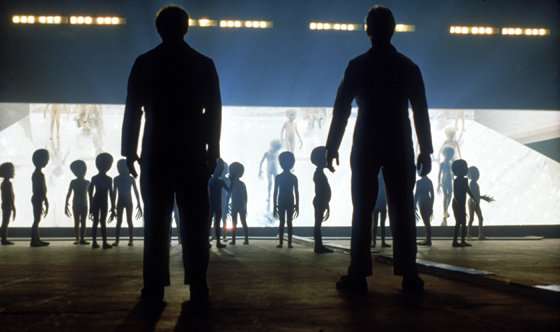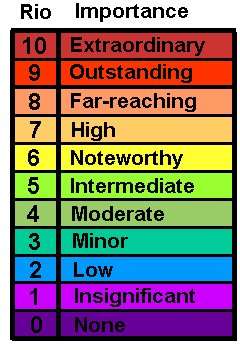Scientists revise the Rio Scale for reported alien encounters

A team of international researchers, led by scientists from the University of St Andrews and the SETI Institute in Mountain View, California, redefines alien detection scale.
What are the consequences for the human race if we encountered extraterrestrial intelligence? If you see a story about aliens on TV or online, how excited should you be? A new study, published in the International Journal of Astrobiology, revamps a long-used tool for classifying potential signals from extraterrestrial intelligence, making it fit for the modern world of news and social media.
First developed in 2001, the Rio Scale is a tool used by astronomers searching for extraterrestrial intelligence (ETI) to help communicate to the public 'how excited' they should be about what has been observed. The Scale measures the consequences for humans if the signal is from aliens, as well as the probability that the signal really is from aliens, and not a natural phenomenon or human-made. The scale gives a score between zero and ten, so that the public can quickly see how important a signal really is.
"The whole world knows about the Richter Scale for quantifying the severity of an earthquake; that number is reported immediately following a quake and subsequently refined as more data are consolidated," said Jill Tarter, co-founder of the SETI Institute. "The SETI community is attempting to create a scale that can accompany reports of any claims of the detection of extraterrestrial intelligence and be refined over time as more data become available. This scale should convey both the significance and credibility of the claimed detection. Rio 2.0 is an attempt to update the scale to make it more useful and compatible with current modes of information dissemination, as well as providing means for the public to become familiar with the scale."
There have been many dubious signals reported as 'aliens' in recent years, and learning the truth about these stories is increasingly difficult. As such, an updated Rio Scale is required.

The new study, led by Dr. Duncan Forgan at the University's Centre for Exoplanet Science, highlights the changing nature of news media, the growth of 24-hour news and the new landscape of social media. Coupled with an increase in efforts to detect ETI by teams around the world, the Rio Scale is needed more than ever, and it must remain relevant when communicating to the public about 'alien signals'.
The international team of researchers' revision of the Rio Scale (Rio 2.0) aims to bring consensus across academic disciplines, when classifying signals potentially indicating the existence of advanced extraterrestrial life. Rio 2.0 can quickly calibrate the public expectations of a reported signal, and educate them as to how SETI scientists actually evaluate a signal, from its initial detection through the various verification stages needed to determine if a signal is credibly from ETI.
Key to the research is also the development of a single set of consistent terminology for discussing signals, both among researchers and in the media.
The team has published an online Rio Scale Calculator, an interactive tool for scientists and science communicators to evaluate signals and give advice on how to use it for better reporting of ETI in the media.
Lead researcher, Dr. Duncan Forgan, Centre for Exoplanet Science, University of St Andrews, said: "It's absolutely crucial that when we talk about something so hugely significant as the discovery of intelligent life beyond the Earth, we do it clearly and carefully. Having Rio 2.0 allows us to rank a signal quickly in a way that the general public can easily understand, and helps us keep their trust in a world filled with fake news."
The new Rio Scale has now been submitted to the International Academy of Astronautics Permanent Committee on SETI for official ratification.
More information: Duncan Forgan et al. Rio 2.0: revising the Rio scale for SETI detections, International Journal of Astrobiology (2018). DOI: 10.1017/S1473550418000162
Journal information: International Journal of Astrobiology
Provided by University of St Andrews





















